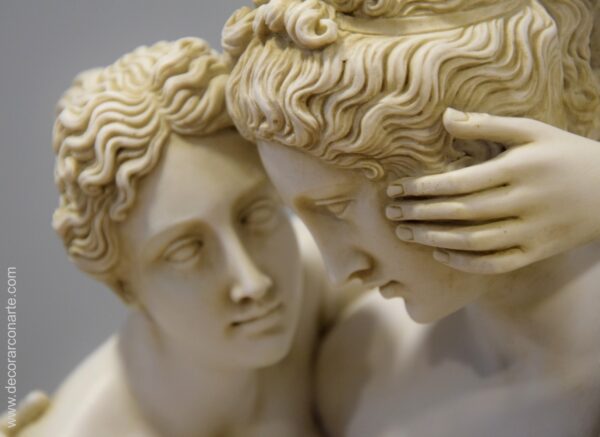Description
Decorative figure of the Three Graces, a high-quality reproduction made of molded marble (marble powder bonded with resins) and finely polished. Patinated with natural earth tones that give it the finish of a sculpture embellished by the passage of time.
This statue can be exposed to the elements (outdoors). Ideal for interior and exterior decoration, gardens, and terraces.
Dimensions: Height: 73 cm. Width: 41 cm. Depth: 21 cm.
Approximate weight: 30 kg.
The measurement includes the base. Base made of natural marble.
The piece is a reproduction of the sculpture created by the famous artist Antonio Canova. Canova (1757 – 1822) was an Italian sculptor and painter of Neoclassicism. His style was largely inspired by the art of Ancient Greece, and his works were compared by his contemporaries to the best production of antiquity. He was considered the best European sculptor since Bernini.
The Charites in Greek mythology were the goddesses of Grace, associated with Aphrodite. They are the daughters of Zeus and Eurynome and were named Euphrosyne (“joy”), Thalia (“festivity”), and Aglaia (“splendor”). The three Charites or Graces were a favorite subject of visual arts and were often depicted nude while touching or embracing each other.
In Roman mythology, the Graces are known by these names: Castitas, Pulcritud, and Voluptas, meaning the virgin, the wife, and the lover. There are two opposite interpretations: firstly, in Greek mythology, they are a triad composed of three aspects of the same attribute; secondly, in Latin mythology, they are a triad representing three different archetypes of women.
Decorating with reproductions of large classical sculptures inspired by characters from Greco-Roman mythology, such as this neoclassical sculpture of the Three Graces, brings elegance and sophistication to any space. By incorporating these works of art into rooms like an office or library or into our gardens and terraces, we create a unique atmosphere that blends timeless beauty with contemporaneity, bridging the gap between the past and the present.











































Reviews
There are no reviews yet.